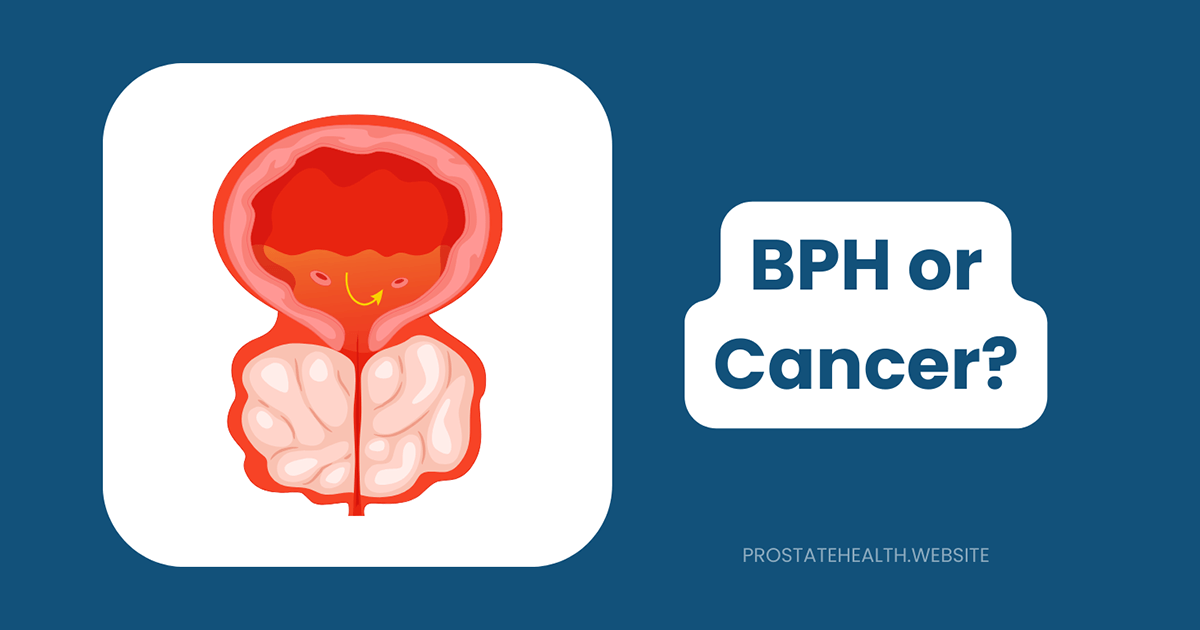Prostate Cancer Survival Rates: Understanding the Statistics

When faced with a prostate cancer diagnosis, one of the first questions many men ask is: “What are my chances of survival?” This question is natural and important, but understanding survival statistics—and what they mean for you personally—can be challenging.
As someone who has guided countless men through their prostate cancer journeys, I’ve seen how survival statistics can provide both reassurance and anxiety. Today, I’m breaking down prostate cancer survival rates in clear, straightforward terms to help you better understand what these numbers mean and how they might apply to your situation.
The Good News: Prostate Cancer Survival Rates Are Encouraging
Let’s start with the most positive news: prostate cancer has one of the highest survival rates of any type of cancer. According to the latest data from the National Cancer Institute’s Surveillance, Epidemiology, and End Results (SEER) Program:
- The overall 5-year relative survival rate for prostate cancer is approximately 98%
- For men diagnosed with localized or regional prostate cancer, the 5-year relative survival rate is nearly 100%
- Even at 10 years after diagnosis, the relative survival rate remains high at about 98%
- At 15 years post-diagnosis, the relative survival rate is still approximately 95%
Dr. James Wilson, oncologist at University Medical Center, explains: “These statistics reflect tremendous progress in prostate cancer detection and treatment. Many men diagnosed with prostate cancer today will live just as long as they would have without cancer, often dying from other causes entirely.”
Understanding Survival Rate Terminology
Before diving deeper into the numbers, it’s important to understand what these statistics actually mean:
Relative Survival Rate
This is the percentage of people with the disease who are still alive after a specific time period (usually 5 years) compared to people of the same age and sex who don’t have the disease. It’s the most common way to describe cancer survival.
For example, a 5-year relative survival rate of 98% means that men with prostate cancer are, on average, 98% as likely as men without prostate cancer to live at least 5 years after diagnosis.
Overall Survival Rate
This is the percentage of people who are still alive after a specific time period regardless of cause of death.
Disease-Specific Survival Rate
This is the percentage of people who have not died from the specific disease over a certain period.
Survival Rate vs. Cure Rate
Survival rates don’t necessarily indicate whether someone is “cured.” A man might be living with prostate cancer that is well-controlled but not eliminated.
Survival Rates by Stage
Prostate cancer survival varies significantly depending on how far the cancer has spread at the time of diagnosis:
Localized Prostate Cancer
Definition: Cancer that is confined to the prostate gland.
5-year relative survival rate: >99%
What this means: Almost all men diagnosed with cancer that hasn’t spread beyond the prostate will live at least 5 years after diagnosis, with many living much longer.
Regional Prostate Cancer
Definition: Cancer that has spread to nearby structures or lymph nodes.
5-year relative survival rate: >99%
What this means: Even when prostate cancer has spread to some degree outside the prostate, treatment outcomes remain excellent for most men.
Distant (Metastatic) Prostate Cancer
Definition: Cancer that has spread to distant parts of the body, such as bones, liver, or lungs.
5-year relative survival rate: Approximately 38%
What this means: While this number is significantly lower, it’s important to note that:
- This represents an average across many different cases
- Treatments for metastatic prostate cancer continue to improve
- Some men with metastatic disease live much longer than 5 years
Survival Rates by Age
Age at diagnosis can influence prostate cancer survival rates:
| Age Group | 5-Year Relative Survival Rate |
| Under 50 | 97% |
| 50-64 | 98% |
| 65-74 | 99% |
| 75+ | 97% |
Interestingly, very young men (under 30) with prostate cancer tend to have lower survival rates (around 60%), likely because prostate cancer that develops at such a young age is often more aggressive. However, prostate cancer is extremely rare in this age group.
Racial Disparities in Prostate Cancer Survival
One of the most significant concerns in prostate cancer is the disparity in outcomes between different racial groups:
- Black men have the highest incidence rate of prostate cancer at approximately 195 per 100,000 men
- Black men have a prostate cancer mortality rate about twice that of white men
- The 5-year relative survival rate for Black men is slightly lower than for white men, though the gap has narrowed in recent years
Dr. Sarah Chen, public health researcher, notes: “These disparities reflect a complex interplay of genetic factors, access to healthcare, socioeconomic status, and other social determinants of health. Addressing these disparities requires both medical and social approaches.”
Factors That Influence Survival Rates
While stage at diagnosis is the most significant predictor of survival, several other factors influence an individual’s prognosis:
1. Gleason Score/Grade Group
The Gleason score measures how aggressive the cancer cells look under a microscope:
- Grade Group 1 (Gleason 6): Very favorable prognosis
- Grade Group 2-3 (Gleason 7): Intermediate prognosis
- Grade Group 4-5 (Gleason 8-10): Less favorable prognosis
2. PSA Level
Prostate-specific antigen (PSA) levels at diagnosis can predict outcomes:
- Lower PSA levels generally indicate better prognosis
- Very high PSA levels (>20 ng/mL) may suggest more advanced disease
3. PSA Doubling Time
How quickly PSA levels rise can be more important than the absolute level:
- PSA doubling time >12 months: Associated with a 10% 5-year prostate cancer-specific death rate
- PSA doubling time <12 months: Associated with a 50% mortality rate
- PSA doubling time <3 months: Associated with a mortality rate 20 times greater
4. Age and Overall Health
Younger, healthier men generally have better outcomes, partly because they can tolerate more aggressive treatments if needed.
5. Treatment Received
Access to and response to various treatments significantly impacts survival.
6. Molecular and Genetic Factors
Certain genetic mutations and molecular features of the tumor can influence how aggressive the cancer is and how it responds to treatment.
Robert, 67, shares his experience: “When I was diagnosed with prostate cancer, my doctor explained that my Gleason score of 6, PSA of 4.2, and the fact that the cancer was confined to my prostate all pointed to an excellent prognosis. That information helped me decide on active surveillance rather than immediate treatment.”
How to Interpret Survival Statistics for Your Situation
While survival statistics provide valuable information, they have important limitations when applied to individuals:
1. Statistics Are Averages
Survival rates represent the average experience of large groups of patients. Individual outcomes can vary significantly from these averages.
2. Statistics Are Backward-Looking
Current survival statistics are based on men diagnosed and treated several years ago. Treatments continue to improve, so the outlook for someone diagnosed today may be better than these statistics suggest.
3. Statistics Don’t Account for All Factors
Published survival rates typically don’t account for all the factors that influence individual prognosis, such as overall health, specific genetic features of the tumor, or access to the latest treatments.
4. Statistics Don’t Predict Individual Outcomes
No statistic, no matter how detailed, can precisely predict how long an individual will live with prostate cancer.
Dr. Wilson emphasizes: “I encourage my patients to understand the statistics but not to fixate on them. They provide a general framework, but your individual journey with prostate cancer will be unique.”
Recent Trends in Prostate Cancer Survival
Several important trends have emerged in prostate cancer survival in recent years:
1. Overall Improvement
The prostate cancer death rate declined by about half from 1993 to 2022, primarily due to earlier detection and advances in treatment.
2. Stage Migration
With increased PSA testing, more cancers are being detected at earlier, more treatable stages.
3. Treatment Advances
New treatments, particularly for advanced prostate cancer, have improved survival even for men with metastatic disease.
4. Precision Medicine
Increasingly, treatments are being tailored to the specific characteristics of an individual’s cancer, potentially improving outcomes.
Beyond Survival: Quality of Life Considerations
While survival is critically important, quality of life during and after treatment is equally significant for many men:
- Some treatments with high survival rates may have side effects that impact quality of life
- Less aggressive approaches may sometimes be appropriate, even if they have slightly lower survival rates
- The concept of “functional survival”—living well, not just living longer—is increasingly important in prostate cancer care
Thomas, 71, reflects: “My doctor and I chose a treatment approach that balanced survival benefit with quality of life considerations. Five years later, I’m not only cancer-free but still enjoying an active life with my family. That holistic approach to my care made all the difference.”
Questions to Ask Your Doctor About Survival Statistics
When discussing survival statistics with your healthcare team, consider asking:
- Based on my specific cancer characteristics (stage, grade, PSA), what is my individual prognosis?
- How might my age and overall health affect my prognosis?
- How might the specific treatment you’re recommending affect my survival?
- Are there any clinical trials or newer treatments that might improve my prognosis?
- Beyond survival, how might different treatment options affect my quality of life?
The Bottom Line: Informed Optimism
The overall message from prostate cancer survival statistics is one of informed optimism:
- Most men diagnosed with prostate cancer today will not die from the disease
- Even for advanced disease, treatments continue to improve
- Understanding your individual risk factors and cancer characteristics is more important than general statistics
- A personalized approach to treatment, considering both survival and quality of life, offers the best outcomes
Dr. Chen concludes: “While statistics provide valuable context, they don’t define any individual’s journey with prostate cancer. With advances in early detection and treatment, along with personalized care approaches, the outlook for men with prostate cancer continues to improve.”
Conclusion: Statistics as a Starting Point
Survival statistics provide a valuable starting point for understanding prostate cancer prognosis, but they’re just that—a starting point. Your individual journey will be influenced by many factors beyond what statistics can capture.
By understanding both the encouraging overall picture and the specific factors that influence prognosis, you can have more informed discussions with your healthcare team and make decisions that align with your personal values and goals.
Have you had experience interpreting cancer statistics? Share your insights or questions in the comments below—your perspective might help another man navigating his prostate cancer journey.
- External Resources:
- National Cancer Institute: Survival Statistics – https://seer.cancer.gov/statfacts/html/prost.html
- American Cancer Society: Survival Rates by Stage – https://www.cancer.org/cancer/types/prostate-cancer/detection-diagnosis-staging/survival-rates.html






